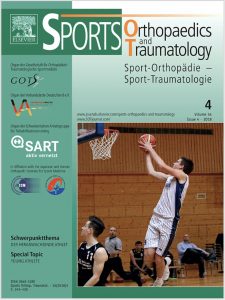Publications

Foam rolling effects on soft tissue tone, elasticity and stiffness in the time course of recovery after weight training
Authors: Jan Schroeder, Linda Lueders, Mike Schmidt, Klaus-Michael Braumann, Karsten Hollander
Affiliations: University of Hamburg, Institute of Human Movement Science, Hamburg, Germany
Journal: Sports Orthopaedics and Traumatology - Volume 34, Issue 4 (DOI: 10.1016/j.orthtr.2018.11.003)
-
Field & Applications:
- Sport
- Warm-up / Recovery
Foam rolling is widely used as a regeneration tool. Tissue tone alterations appear to be reasonable as underlying mechanism and could be detected using myotonometry.
Twenty healthy volunteers participated in a study design with repeated measurements. Using myotonometry, tissue tone properties were assessed for both limbs directly before and after a fatiguing bilateral knee extension exercise session, and during the following three days of recovery. The right thigh received an additional foam roll treatment directly before all post-exercise measurements, while the left limb remained untreated and served as a control function.
There was no significant interaction demonstrating a probable foam roll effect on any soft tissue property parameter (p > 0.05).
We conclude that commonly used foam roll protocol conditions are not affecting tissue tone properties. Further research would be needed to investigate varying dose response conditions.
Foam rolling did not show any effect on soft tissue tone properties as measured in terms of myotonometry. For practical applications, it is concluded that a common protocol of two sets of 45 s foam rolling after bout of regular fitness weight training cannot be recommended, if soft tissue tone alterations are targeted for restoration purposes. Future studies – preferably conducted using a randomized parallel group design – are needed to further investigate conceivable tissue tone alterations due to self-myofascial release techniques with varied dose-response conditions (pressure intensity, duration, cadence, repetitions or devices).


